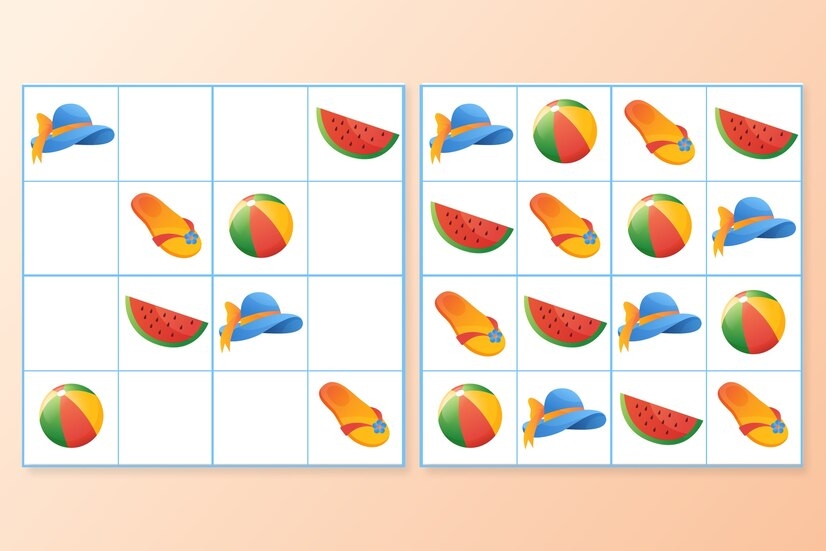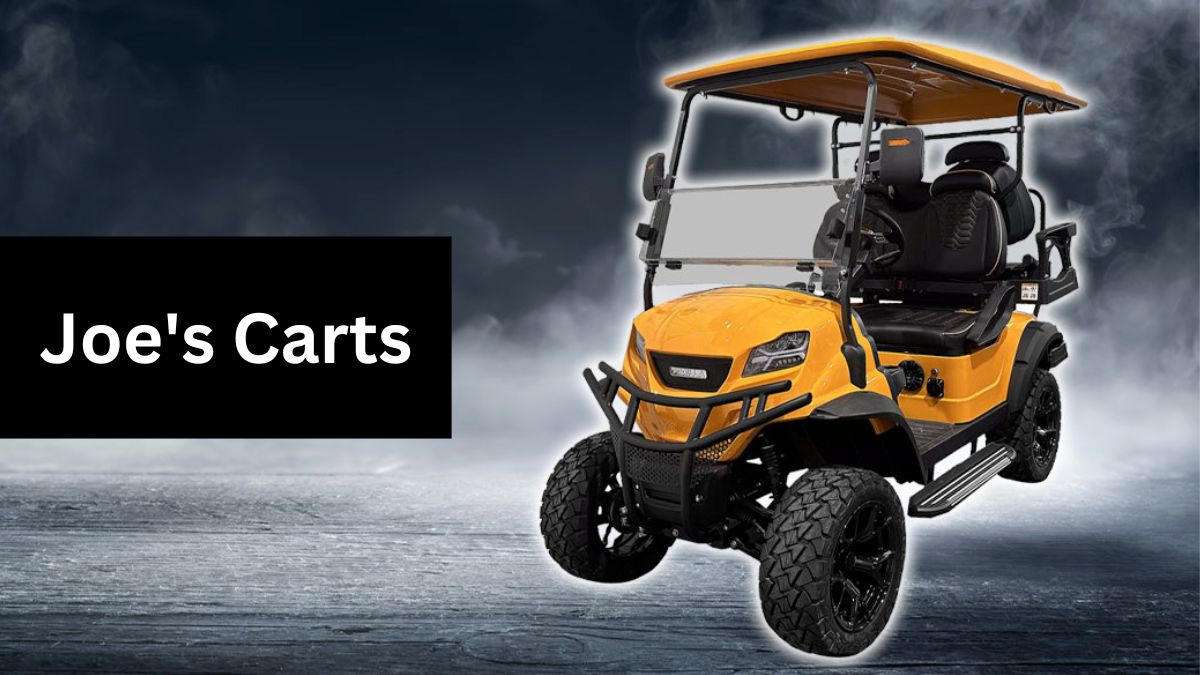BIOGRAPHY
Surface area and volume digital cut and paste

In an era where digital transformation is reshaping every aspect of our lives, education is no exception. The integration of technology into learning activities, such as studying surface area and volume, is creating dynamic educational experiences. This blog post will unravel how digital cut-and-paste techniques are revolutionizing the way students learn these fundamental mathematical concepts.
We’ll explore the benefits of this approach for teachers and learners alike, from enhancing engagement to improving comprehension. By the end, you’ll understand why adopting digital tools for teaching surface area and volume is not just a trend but a necessity.
Understanding Surface Area and Volume in Education
Mathematics is a subject that builds on itself. Concepts like Surface area and volume digital cut and paste form the critical foundation for more advanced topics in fields such as physics, engineering, and architecture. Hence, mastering these basics is essential for students.
In the traditional classroom, teachers present these concepts using physical models and drawings. However, this can be challenging as students often struggle to visualize the shapes and dimensions necessary to grasp these ideas effectively. The introduction of digital cut-and-paste activities offers a new pathway to understanding.
These activities leverage interactive elements that allow students to manipulate shapes directly on their screens. This hands-on approach not only aids in better visualization but also makes learning more appealing to the digital generation.
The Role of Technology in Modern Education
Technology has become an integral part of education, breaking geographical barriers and providing access to resources that were once confined to textbooks. In the context of surface area and volume, digital tools enhance learning by offering simulations and interactive experiences.
For instance, students can now explore complex geometrical shapes in 3D, rotate them, and observe from multiple angles. This modern approach caters to various learning styles, accommodating visual, auditory, and kinesthetic learners.
Additionally, digital cut-and-paste tools empower students to engage with the content actively, fostering a deeper understanding rather than passive memorization. This shift not only makes learning more effective but also aligns with the skills required in today’s technology-driven world.
Why Choose Digital Cut and Paste?
The question arises—why should educators integrate digital cut-and-paste methods into their curriculum? First and foremost, it brings the subject matter to life. By moving beyond static diagrams, students can better grasp the relationship between different shapes and their corresponding surface areas and volumes.
Furthermore, it encourages critical thinking and problem-solving. When students physically manipulate dimensions and see the resulting changes, they develop a stronger conceptual understanding. This interactive process enhances retention and stimulates curiosity, fostering a love for mathematics.
Another significant advantage is the flexibility it offers. Digital activities can be tailored to individual learning paces, ensuring that no student is left behind. This personalized learning experience is invaluable, especially in mixed-ability classrooms.
Practical Applications of Surface Area and Volume
Understanding surface area and volume digital cut and paste isn’t just about passing exams; it’s about preparing for real-world applications. These concepts are fundamental in numerous professions, from architecture to product design.
Digital cut-and-paste tools provide students with a practical understanding of how these mathematical principles apply outside the classroom. For example, students might explore how to optimize packaging in a project-based activity, considering both material use and cost efficiency.
By engaging with these digital activities, students gain not only academic knowledge but also practical skills that are transferable to various career paths. This hands-on learning prepares them for the future, equipping them to tackle real-world challenges.
Crafting Engaging Digital Activities
Creating digital cut-and-paste activities requires thoughtful planning to ensure they are both engaging and educational. Begin by defining clear learning objectives. What do you want your students to achieve by the end of the exercise?
Incorporate a variety of shapes and scenarios to cover a broad spectrum of surface area and volume calculations. Use software or online platforms that allow students to interact with the materials flexibly. This ensures that the activities remain dynamic and capable of holding students’ interest.
Include tasks that require students to apply their knowledge creatively. For example, challenge them to design a structure using specific dimensions or solve a real-world problem using their understanding of surface area and volume.
Benefits of Interactive Learning
Interactive learning is a powerful educational strategy that involves students in active participation during the learning process. The benefits are numerous. First, it increases student engagement. When learners are actively involved, they are more likely to be motivated and enthusiastic about the subject matter.
Interactive activities also improve critical thinking and problem-solving skills. Students are encouraged to explore, ask questions, and develop solutions, fostering a deeper understanding of the concepts.
Lastly, interactive learning promotes collaboration. Digital cut-and-paste activities can be designed for group work, encouraging teamwork and communication skills. This prepares students for collaborative environments in future academic and professional settings.
Overcoming Challenges in Digital Learning
While digital cut-and-paste activities offer numerous benefits, they also come with challenges that educators must address. One common concern is the accessibility of technology. Not all students may have access to the necessary devices or reliable internet.
Educators can overcome this by incorporating a mix of digital and traditional methods or providing resources for students to complete assignments offline. It is also crucial to offer training for both students and teachers to ensure everyone is comfortable using the tools.
Another challenge is maintaining student focus in a digital environment filled with distractions. Setting clear guidelines and creating structured activities help keep students engaged and on task.
Integrating Digital Tools into the Curriculum
To successfully integrate digital cut-and-paste activities into the curriculum, educators should start small. Begin by introducing these activities in lessons where they can have the most impact, gradually expanding their use as comfort and familiarity grow.
Align digital activities with learning goals and assessments. This ensures that they are not seen as add-ons but as integral parts of the educational experience. Providing ongoing support and feedback will also help refine these tools over time, maximizing their effectiveness.
Collaboration among educators can lead to the sharing of best practices and resources, making the integration process smoother and more successful.
Feedback and Assessment in Digital Learning
Feedback plays a crucial role in the learning process, especially when it comes to digital activities. Educators should provide timely and constructive feedback to guide students in their learning journeys.
Use digital tools to offer immediate feedback and allow students to correct mistakes in real-time. This approach helps them learn from errors and reinforces their understanding of surface area and volume concepts.
Assessment should not solely focus on accuracy but also on the learning process. Encourage students to reflect on their experiences with the activities and provide opportunities for self-assessment.
Future Trends in Digital Education
The future of education is undoubtedly digital, with emerging technologies continuously reshaping the learning landscape. Virtual reality (VR) and augmented reality (AR) offer exciting possibilities for teaching surface area and volume, providing immersive experiences that bring concepts to life.
AI and machine learning will further personalize learning, adapting activities to individual student needs and preferences. This ensures that each learner can progress at their own pace, maximizing their potential.
By staying abreast of these trends, educators can continue to innovate and enhance the teaching of surface area and volume, preparing students for a future where digital literacy is paramount.
Conclusion
Digital cut-and-paste activities are transforming the way students learn surface area and volume. By offering interactive, engaging, and personalized experiences, they equip students with the skills necessary for academic success and real-world applications.
Educators who integrate these digital tools into their curriculum foster a love for learning and prepare students for the challenges of tomorrow. For those interested in exploring further, numerous resources and platforms are available to support the implementation of these forward-thinking educational strategies.
Whether you’re an educator or a student, the digital revolution in education offers exciting opportunities to explore and expand your understanding of mathematics in a way that connects with the modern world.
BIOGRAPHY
The Journey of Rivals on the Pitch Pakistan and Afghanistan’s Cricket Clash

Cricket is more than just a sport in South Asia; it’s a passion that unites millions. Among the numerous cricketing rivalries, the timeline of matches between the Pakistan national cricket team and the Afghanistan national cricket team offers a narrative filled with drama, sportsmanship, and intense competition. This blog post will explore the evolution of this rivalry, examining the key matches, the growth of Afghan cricket, and the significance of these encounters for both nations.
Origins of Afghan Cricket Passion Ignited
The story of Afghan cricket begins not on the pitches but in the refugee camps of Pakistan. In the 1980s and 1990s, as many Afghans fled their war-torn country, they found solace in cricket—a sport that quickly became a symbol of hope and resilience. In the camps, young Afghan boys would mimic Pakistani cricket idols, dreaming of one day donning a cricket jersey themselves.
By the early 2000s, Afghanistan had begun to establish its own national cricket team. Their initial forays into international cricket were modest, yet they carried a determination that caught the attention of cricketing bodies worldwide. This passion for cricket laid the groundwork for what would become a remarkable rise in international cricket.
The pathway to recognition involved perseverance. Afghanistan’s entry into international cricket was marked by participation in the ICC World Cricket League. Their early matches were crucial in building a foundation that would eventually lead to official One Day International (ODI) status. These foundational steps were vital, setting the stage for future encounters with cricketing giants like Pakistan.
Pakistan Cricket Legacy and Influence
Pakistan, with its rich cricketing history, has always been a powerhouse in global cricket. From the legendary Imran Khan to the modern-day prodigies like Babar Azam, Pakistan’s cricketing legacy is profound. This legacy has not only inspired countless players within its borders but has also had a significant impact on Afghanistan’s budding cricketers.
The proximity of Afghanistan to Pakistan facilitated a natural exchange of cricketing culture. Many Afghan players honed their skills by watching and learning from Pakistani cricket. This cross-border influence played a pivotal role in shaping the early Afghan teams, who would later face Pakistan on the international stage.
Pakistan’s cricketing infrastructure also served as a model for Afghanistan. Access to better facilities and competitive leagues in Pakistan provided Afghan players with the exposure needed to compete at higher levels. This relationship between the two nations—one of mentor and mentee—would evolve into a competitive rivalry as Afghanistan’s cricket prowess grew.
First Encounters on the Cricket Field
The first official ODI match between Pakistan and Afghanistan took place in 2012. This historic game was a momentous occasion for Afghanistan, marking their debut against a major cricketing nation. Held in Sharjah, the match was highly anticipated, drawing attention from fans across both countries.
Despite their inexperience, the Afghan team displayed remarkable tenacity. Pakistan, however, emerged victorious, showcasing their seasoned skill. The match was a learning experience for Afghanistan, who viewed it as an opportunity to understand the nuances of competing against a world-class team.
For Pakistan, the match was a chance to witness firsthand the rise of Afghan cricket. Recognizing the potential in their neighbors, Pakistani players and coaches offered encouragement and advice, fostering a sense of camaraderie despite the competitive nature of the encounter. This spirit of sportsmanship set the tone for future matches.
Building a Competitive Rivalry
Over the years, the cricketing encounters between Pakistan and Afghanistan have evolved from mere matches to intense battles. Each game is not just about winning but also showcasing national pride and cricketing prowess. The growing competitiveness of the Afghan team has added layers of excitement to this rivalry, making it a highlight in the cricketing calendar.
These matches have often been closely contested, with Afghanistan pushing Pakistan to their limits. Afghanistan’s aggressive playing style, combined with the tactical experience of their players, has made them formidable opponents. This competitiveness has elevated the quality of cricket, captivating audiences and promoting the sport’s growth in the region.
Key players from both teams have emerged as stars in these encounters. Afghan cricketers like Rashid Khan and Mohammad Nabi have become household names, known for their exceptional skills and match-winning performances. Similarly, Pakistani players have risen to the challenge, ensuring that each match is a showcase of cricketing excellence.
Memorable Matches and Iconic Moments
Every rivalry is defined by unforgettable matches that capture the imagination of fans. In the case of Pakistan and Afghanistan, several matches stand out for their intensity and nail-biting finishes. These games have provided cricket enthusiasts with moments of sheer brilliance and drama.
One such memorable encounter was during the 2018 Asia Cup. The match was closely fought, with both teams displaying exceptional skill and determination. Pakistan narrowly edged out a victory, but it was Afghanistan’s spirited performance that stole the spotlight, earning them accolades from fans and experts alike.
Another iconic moment occurred in the 2019 ICC Cricket World Cup. Afghanistan came tantalizingly close to defeating Pakistan, showcasing their growth as a cricketing nation. Pakistan ultimately won, but the match highlighted Afghanistan’s ability to compete at the highest level, further intensifying the rivalry.
The Role of Rivalry in Growing Afghan Cricket
The Pakistan-Afghanistan cricket rivalry has been instrumental in the development of Afghan cricket. Each match against Pakistan serves as a benchmark for Afghanistan, motivating them to continuously improve. This rivalry has pushed Afghan players to hone their skills and adapt to the demands of international cricket.
Playing against a team with Pakistan’s pedigree offers invaluable experience to Afghan players. They learn to handle pressure situations, strategize effectively, and adapt to different playing conditions. This exposure has contributed to Afghanistan’s rapid ascent in the cricketing world, earning them respect and recognition.
The rivalry also inspires the next generation of Afghan cricketers. Young players in Afghanistan look up to these matches as opportunities to witness their heroes in action. It fuels their ambition to follow in the footsteps of their predecessors, ensuring a steady pipeline of talent for the national team.
Impact on Bilateral Relations
Beyond the cricket field, the Pakistan-Afghanistan rivalry has implications for bilateral relations between the two countries. Cricket serves as a bridge, fostering a spirit of camaraderie and goodwill. The matches offer a platform for cultural exchange and mutual respect, promoting harmony between neighboring nations.
Cricket diplomacy has gained prominence in recent years, with cricketing events providing opportunities for dialogue and collaboration. The rivalry, while competitive, underscores the potential for sport to transcend political differences and bring people together in celebration of shared passions.
Both governments recognize the importance of cricket in strengthening ties. Collaborative initiatives, such as joint cricket academies and training programs, have been proposed to enhance cricketing skills and foster unity. These efforts demonstrate the power of sport to promote peace and understanding.
Fan Engagement and Social Media Buzz
Social media has amplified the reach and impact of the Pakistan-Afghanistan cricket rivalry. Fans from both countries actively engage in discussions, sharing their passion and excitement online. Hashtags related to the matches often trend, generating buzz and anticipation.
The digital age has enabled fans to connect and share their opinions instantly. Memes, commentary, and live updates flood social media platforms during matches, creating a sense of community among fans. This engagement extends beyond borders, with cricket enthusiasts worldwide joining in the conversation.
The rivalry has also led to creative expressions of support. Fans organize viewing parties, design fan art, and celebrate victories with fervor. This level of engagement not only enhances the match experience but also strengthens the bond between players and their supporters.
Challenges and Controversies
No rivalry is without its challenges and controversies. The Pakistan-Afghanistan cricket rivalry has witnessed its share of heated moments and disputes. Tensions on the field have occasionally spilled over into verbal altercations, reflecting the high stakes and emotions involved.
Umpiring decisions, player confrontations, and on-field conduct have sparked debates and controversies. These incidents, while adding drama to the rivalry, also highlight the passion and intensity that cricket evokes. Players and officials strive to maintain the spirit of the game amidst these challenges.
Efforts to address these controversies focus on promoting sportsmanship and fair play. Both cricket boards emphasize the importance of mutual respect and professionalism. Initiatives to educate players about conduct and behavior seek to ensure that the rivalry remains a positive and competitive force in cricket.
The Future of Pakistan-Afghanistan Cricket
Looking ahead, the future of the Pakistan-Afghanistan cricket rivalry is promising. Both teams continue to invest in player development, infrastructure, and strategic planning. The dedication to improvement ensures that future encounters will be even more thrilling and closely contested.
Cricket enthusiasts can anticipate more frequent bilateral series and tournaments featuring these two teams. The growing interest in the rivalry presents opportunities for increased fan engagement, media coverage, and sponsorship. The anticipation and excitement surrounding their matches contribute to the overall growth of cricket.
The rivalry also serves as an inspiration for other emerging cricket nations. It demonstrates the potential for rapid progress and success in the sport, encouraging countries with developing cricket ecosystems to pursue excellence. The Pakistan-Afghanistan cricket timeline is a testament to the power of determination and passion.
Conclusion A Shared Passion Beyond Boundaries
In conclusion, the timeline of cricket matches between the Pakistan national cricket team and the Afghanistan national cricket team is a captivating narrative of growth, competition, and camaraderie. This rivalry has transcended borders, uniting fans and players in a shared love for the sport.
The evolution of Afghan cricket, influenced by Pakistan’s legacy, has been marked by resilience and determination. Each match is a celebration of the progress made by Afghanistan in the cricketing world. The rivalry has not only enhanced the quality of cricket but has also fostered diplomatic and cultural ties between the two nations.
As we look to the future, the Pakistan-Afghanistan cricket rivalry promises to deliver more unforgettable moments and memorable matches. It is a testament to the enduring power of sport to connect people, inspire nations, and create lasting memories for generations to come. Whether you’re a cricket enthusiast or a casual observer, the clashes between these two teams are a spectacle worth experiencing.
BIOGRAPHY
A Relevant Faith is a Meaningful American Christianity

In today’s rapidly changing world, many people are seeking a connection between their personal beliefs and the broader society. This quest for a “relevant faith” in an American Christian context is more pressing than ever. With a diverse array of challenges facing individuals and communities, the search for a meaningful expression of Christianity can help foster a sense of purpose and belonging. This blog post will explore the concept of a relevant faith, uncover its importance in contemporary American society, and offer practical ways to embody it in everyday life.
The Quest for Relevance
Why Relevance Matters in Faith
The idea of relevance in faith stems from the desire for a belief system that resonates with the practicalities of everyday life. For American Christians, this means finding ways to connect their spiritual practices with the societal issues and personal challenges they encounter. A relevant faith does not exist in isolation; it actively engages with the world, offering guidance and support in real-world contexts.
Challenges Facing Modern Christianity
Modern Christianity faces numerous challenges, such as declining church attendance, increasing secularization, and the need to address social and political issues. These challenges require a faith that can adapt and respond to the needs of its followers, ensuring its continued viability and impact. A relevant faith is one that evolves with the times, providing answers to pressing questions and fostering a deeper understanding of both personal and collective experiences.
The Role of Tradition in a Relevant Faith
While a relevant faith must adapt to contemporary circumstances, it is also deeply rooted in tradition. Christian teachings and practices have evolved over centuries, and these traditions provide a foundation for understanding and interpreting modern dilemmas. By engaging with the rich history of Christianity, believers can draw on timeless wisdom to address present-day challenges and create a more meaningful faith experience.
Building a Meaningful American Christianity
Connecting Faith and Everyday Life
One of the key aspects of a relevant faith is its ability to integrate seamlessly into everyday life. This means finding ways to incorporate spiritual practices and principles into daily routines, relationships, and decision-making processes. By doing so, believers can experience a deeper sense of purpose and fulfillment, while also fostering a stronger connection to their faith community.
Addressing Social Issues Through Faith
A meaningful American Christianity must also engage with social issues, promoting justice, compassion, and understanding in a divided world. This requires a commitment to addressing systemic inequalities and advocating for marginalized communities. By grounding these efforts in Christian teachings, believers can work towards creating a more equitable society that reflects the values of their faith.
The Power of Community in Faith
Community plays a vital role in shaping a relevant faith. By gathering with others who share similar beliefs, individuals can support one another in their spiritual journeys and collaborate on initiatives that promote positive change. Through shared worship, study, and service, faith communities can foster a sense of belonging and purpose, empowering individuals to live out their beliefs in meaningful ways.
Practical Steps for Cultivating a Relevant Faith
Reflecting on Personal Beliefs
To cultivate a relevant faith, individuals must first reflect on their personal beliefs and values. This involves examining how their faith aligns with their daily lives and identifying areas where growth and change may be needed. By engaging in honest self-reflection, believers can develop a more authentic and meaningful connection to their faith.
Engaging with Scripture
Scripture provides a valuable resource for those seeking to deepen their faith and address contemporary challenges. By studying the Bible and other sacred texts, individuals can gain insights into timeless principles that can guide their actions and decisions. Engaging with scripture in a thoughtful and reflective manner can help believers develop a more nuanced understanding of their faith and its relevance to their lives.
Participating in Faith-Based Activities
Active participation in faith-based activities, such as worship services, study groups, and service projects, can help individuals strengthen their connection to their faith and community. By engaging in these activities, believers can gain new perspectives, build supportive relationships, and find meaningful ways to express their beliefs. These experiences can also provide opportunities for personal growth and spiritual development.
Fostering Interfaith Dialogue
The Importance of Understanding Other Beliefs
In an increasingly diverse society, fostering interfaith dialogue is essential for promoting understanding and cooperation between different religious communities. By engaging with individuals from other faith traditions, American Christians can gain valuable insights into their own beliefs and practices, while also learning to appreciate the richness and diversity of the world’s spiritual landscape.
Building Bridges Between Faith Communities
Interfaith dialogue can also help build bridges between faith communities, creating opportunities for collaboration on shared goals and initiatives. By working together, religious groups can address common challenges and promote social justice, environmental stewardship, and community development. These partnerships can strengthen the impact of faith-based efforts and contribute to a more harmonious society.
Encouraging Mutual Respect and Tolerance
A key aspect of interfaith dialogue is the promotion of mutual respect and tolerance. By engaging in open and honest conversations about faith, individuals can develop a greater appreciation for the beliefs and practices of others. This understanding can help break down barriers and reduce prejudice, fostering a more inclusive and accepting society.
The Future of American Christianity
Adapting to Changing Times
As society continues to evolve, American Christianity must adapt to remain relevant and impactful. This involves reexamining traditional practices and beliefs in light of contemporary issues and finding innovative ways to engage with followers. By staying attuned to the needs and concerns of their communities, faith leaders can ensure that their message remains meaningful and resonant.
Nurturing the Next Generation of Believers
The future of American Christianity also depends on nurturing the next generation of believers. By providing young people with opportunities for spiritual growth and engagement, faith communities can inspire them to carry on the traditions and values of their faith. This involves creating spaces where young people feel welcomed, supported, and empowered to explore their beliefs and develop their own spiritual paths.
Cultivating a Global Perspective
In an interconnected world, American Christians can benefit from cultivating a global perspective on faith. By learning from and collaborating with believers from other cultures and traditions, individuals can gain new insights into their own spiritual practices and develop a deeper appreciation for the diverse expressions of Christianity worldwide. This global perspective can enrich personal faith experiences and contribute to a more inclusive and compassionate understanding of the Christian faith.
Conclusion
A relevant faith in American Christianity is one that evolves with the times while remaining grounded in tradition. By addressing contemporary challenges, engaging with social issues, and fostering community and interfaith dialogue, believers can create a meaningful and impactful expression of their faith. As individuals and communities continue to seek connections between their beliefs and the world around them, a relevant faith offers a powerful tool for personal growth, social change, and spiritual fulfillment. By taking practical steps to cultivate this faith in everyday life, American Christians can contribute to a more just, compassionate, and inclusive society.
BIOGRAPHY
Stuart Seldowitz Net Worth, Salary, investments, assets they own

In the world of finance and diplomacy, few names resonate as profoundly as Stuart Seldowitz. Known for his vast expertise and strategic acumen, Stuart Seldowitz Net Worth has carved a niche for himself not only as a seasoned diplomat but also as a savvy investor. For those intrigued by his career and financial trajectory, this blog post offers an in-depth look at the net worth, salary, investments, and assets that define Stuart Seldowitz’s financial portfolio.
This exploration into Seldowitz’s wealth is not just about figures; it’s a narrative of how strategic decisions in political and financial spheres can create substantial financial gains. Our readers, particularly those interested in the intricacies of financial success and career evolution, will gain insights into the factors contributing to Seldowitz’s impressive financial standing. Join us as we unravel the story behind Stuart Seldowitz’s financial achievements and gather valuable lessons that might inspire your own financial and career endeavors.
Charting the Path to Financial Success
Stuart Seldowitz’s financial success is a testament to his keen understanding of both diplomacy and business. Born into an era where globalization was on the rise, Seldowitz seized opportunities that placed him at the intersection of politics and commerce. His early career in international relations equipped him with a unique perspective on global economies, which he adeptly leveraged in his financial ventures.
A key component of Seldowitz’s financial success is his ability to identify emerging markets. By investing in industries and regions poised for growth, he positioned himself ahead of economic trends. This foresight allowed Seldowitz to build a diversified portfolio that minimized risks while maximizing returns. Such strategic investments became a foundation for his growing net worth, demonstrating the power of informed decision-making in financial planning.
In addition to his investment prowess, Seldowitz’s career choices have significantly contributed to his wealth accumulation. Roles in diplomacy, advisory positions, and strategic consultancies not only provided lucrative salaries but also expanded his network, opening doors to exclusive investment opportunities. These career moves exemplify how professional experiences can directly influence one’s financial success.
Exploring Stuart Seldowitz’s Net Worth
The net worth of Stuart Seldowitz is reflective of his multifaceted career and investment strategy. While precise figures can be elusive due to the private nature of personal finances, estimates place Seldowitz’s net worth in the upper echelons, indicative of a life marked by successful ventures and prudent financial management. His ability to maintain and grow his wealth amid fluctuating economic climates underscores his acumen in wealth preservation and growth.
Investments in diverse sectors have played a pivotal role in shaping Seldowitz’s net worth. From technology to real estate, his portfolio is characterized by a mix of high-growth potential and stable returns. This approach not only secures his financial position but also perpetuates the growth of his assets, ensuring a robust financial standing over time.
Furthermore, Seldowitz’s net worth is bolstered by his continuous involvement in ventures that align with his expertise. His advisory roles and participation in strategic boards contribute to income streams beyond traditional investments. By leveraging his knowledge and experience, Seldowitz maintains a dynamic flow of wealth, positioning him as a formidable figure in financial circles.
The Components of Seldowitz’s Salary
Seldowitz’s salary narrative is intertwined with his career trajectory, reflecting his rise through ranks of diplomacy and business. In his governmental roles, he earned competitive salaries commensurate with his responsibilities and expertise. However, it was beyond these roles that Seldowitz truly capitalized on his skills, transitioning into positions that offered substantial financial rewards.
In consultancy and advisory capacities, Seldowitz commanded impressive remuneration packages. These roles not only compensated him for his insights and counsel but also recognized his ability to influence pivotal decisions. Such positions often come with performance-based bonuses, further augmenting his earnings and reinforcing the financial benefits of strategic engagement in high-stakes environments.
Additionally, Seldowitz’s involvement in private sector initiatives has contributed to his salary structure. Collaborations with multinational corporations and think tanks have provided lucrative financial incentives, reflecting the high value placed on his expertise. These earnings underscore the importance of diversifying income sources to build a robust financial profile.
Diving into Investment Strategies
Investments form the backbone of Stuart Seldowitz’s financial empire. His approach to investing is marked by a balance between innovation and stability, allowing him to capitalize on emerging trends while safeguarding against market volatility. Understanding his investment strategies offers valuable insights into successful wealth management.
Seldowitz’s investment philosophy centers around diversification. By distributing his investments across various asset classes, he mitigates risk and enhances potential returns. His portfolio spans stocks, bonds, real estate, and alternative investments, showcasing a comprehensive strategy that navigates economic shifts with resilience.
A notable feature of Seldowitz’s investments is his focus on technology and innovation. Recognizing the potential of tech-driven industries, he has allocated substantial resources to companies at the forefront of technological advancement. These investments have yielded significant returns, validating his forward-thinking approach and highlighting the importance of staying attuned to industry trends.
An Overview of Owned Assets
Beyond liquid investments, Stuart Seldowitz also possesses a range of tangible assets that contribute to his wealth portfolio. Real estate, in particular, plays a prominent role, with properties located in strategic locations known for their appreciation potential. These assets not only provide steady rental income but also serve as valuable long-term investments.
In addition to real estate, Seldowitz’s assets include interests in private enterprises and start-ups. By supporting innovative ventures, he not only benefits financially but also influences the growth of industries aligned with his expertise. These holdings exemplify how strategic asset management can enhance financial stability and growth.
Furthermore, Seldowitz values assets that align with his personal interests and passions. Art collections, luxury vehicles, and philanthropic initiatives reflect a well-rounded asset base that caters to both financial and personal aspirations. This approach underscores the importance of aligning asset acquisition with individual values and goals.
Lessons from Seldowitz’s Financial Journey
Stuart Seldowitz’s financial journey offers several lessons for those striving to achieve similar success. A key takeaway is the importance of adaptability in the face of change. By remaining flexible in investment strategies and career choices, Seldowitz has navigated economic fluctuations with poise, ensuring sustained financial growth.
Another lesson is the value of networking and relationship-building. Seldowitz’s connections have paved the way for exclusive opportunities and collaborations, underscoring the role of interpersonal relationships in financial advancement. Cultivating a strong network can open doors to ventures and prospects that significantly enhance one’s financial landscape.
Finally, Seldowitz’s story highlights the importance of continuous learning. By staying informed about industry developments and honing his skills, he has maintained a competitive edge in various sectors. This commitment to knowledge and growth is a fundamental aspect of achieving and sustaining financial success.
Conclusion
Stuart Seldowitz’s financial narrative is a testament to strategic decision-making, adaptability, and leveraging expertise. His impressive net worth, diverse investments, and robust assets reflect a career marked by informed choices and calculated risks. For individuals and organizations seeking to bolster their financial portfolios, Seldowitz’s story offers invaluable insights and inspiration.
Whether you’re exploring investment opportunities or refining your career path, consider the lessons from Seldowitz’s financial success. By adopting a proactive approach to wealth management and professional growth, you too can build a financial legacy that stands the test of time.
-

 TECHNOLOGY7 months ago
TECHNOLOGY7 months agoNavigate Mojini V3 Login Like a Pro
-

 TOPIC7 months ago
TOPIC7 months agoDiscovering Joe’s Carts: A Adventure on Wheels
-

 BLOG8 months ago
BLOG8 months agoSteve Cartisano Net Worth: A 2024 Deep Dive into His Wealth and Success
-

 BLOG9 months ago
BLOG9 months agoMyWape: A Deep Dive into the Emerging Video-Sharing Platform
-

 BLOG10 months ago
BLOG10 months agollm 申請 statement of purpose
-

 BLOG8 months ago
BLOG8 months agoWhy Aoleonuithietke.com Is the Go-To Resource for Creative Inspiration
-

 TECHNOLOGY7 months ago
TECHNOLOGY7 months agoHow to Review and Analyze Security Camera Footage
-

 ENTERTAINMENT7 months ago
ENTERTAINMENT7 months agoBehind the Screen Magic of Web Series Uncut
